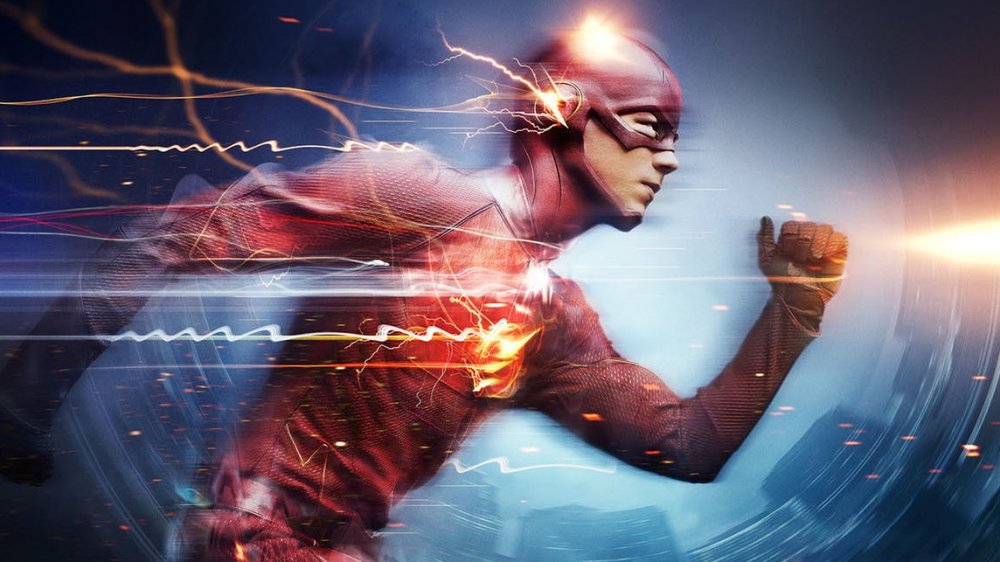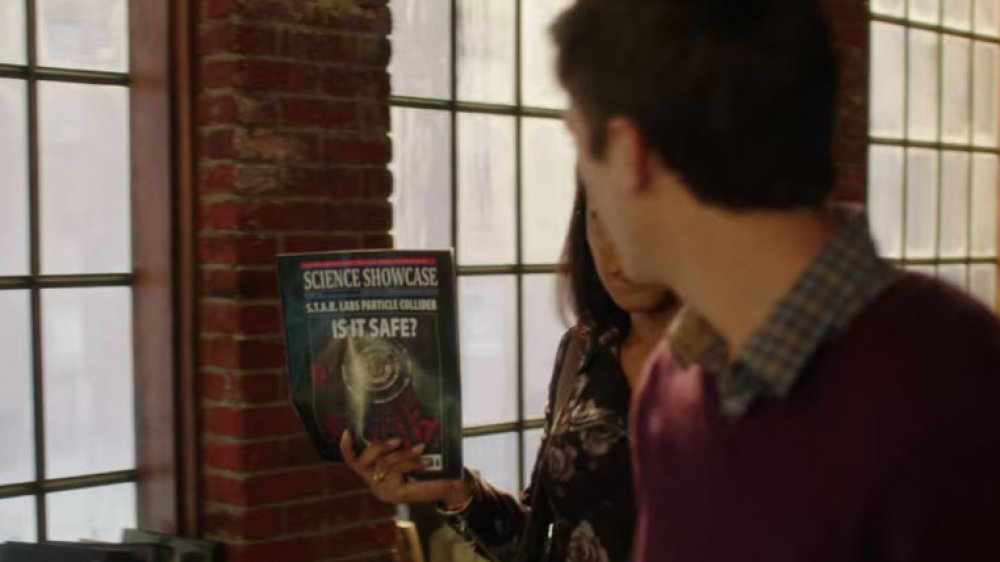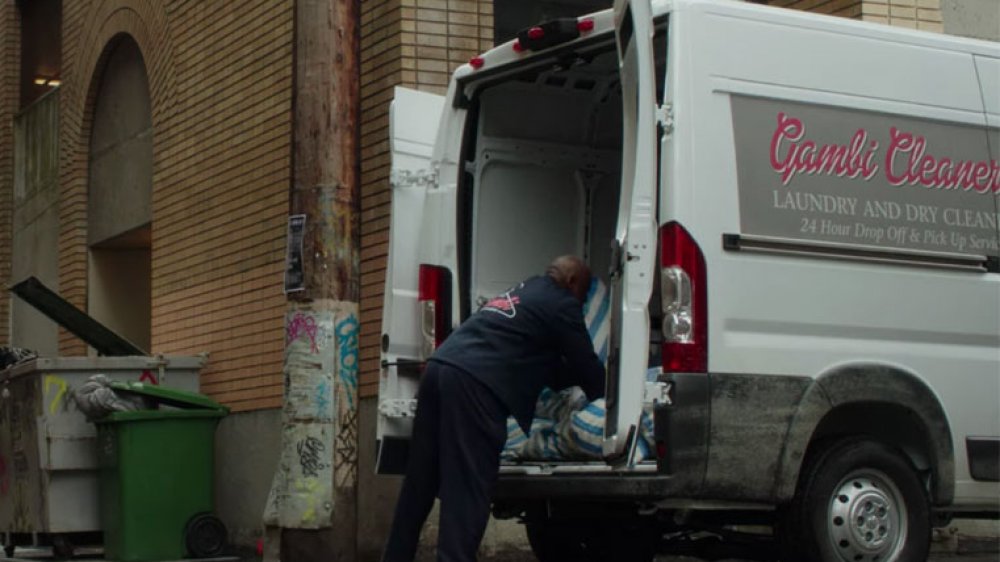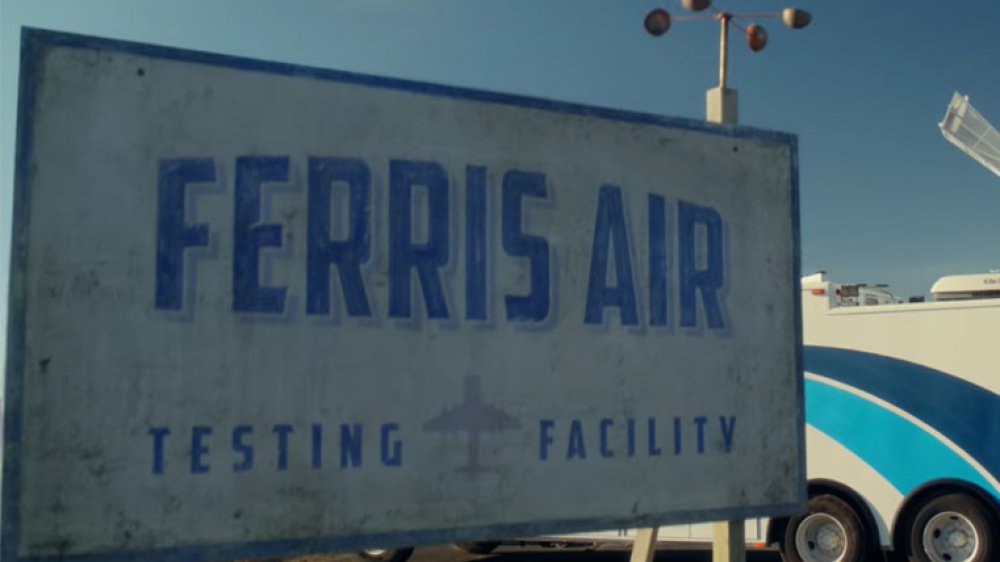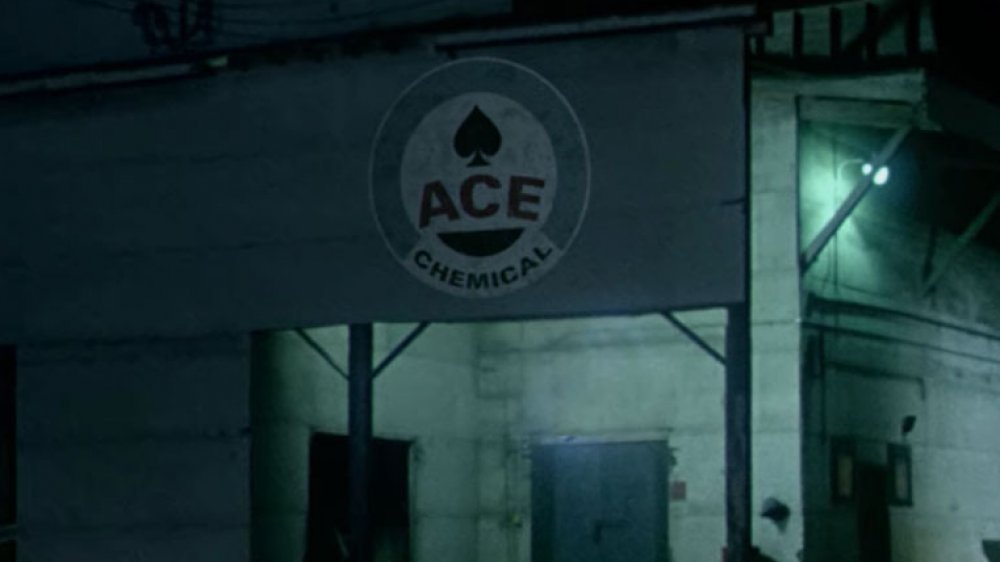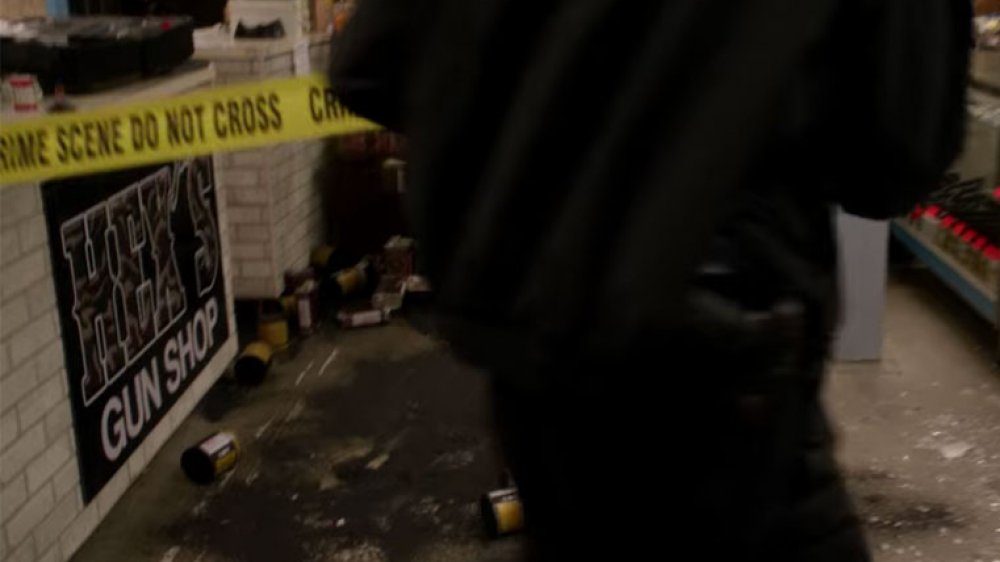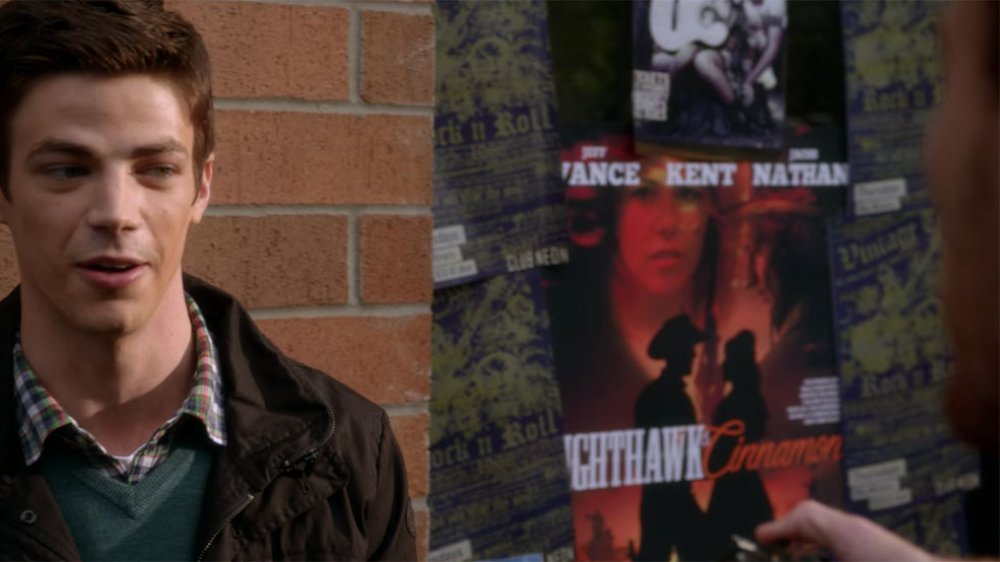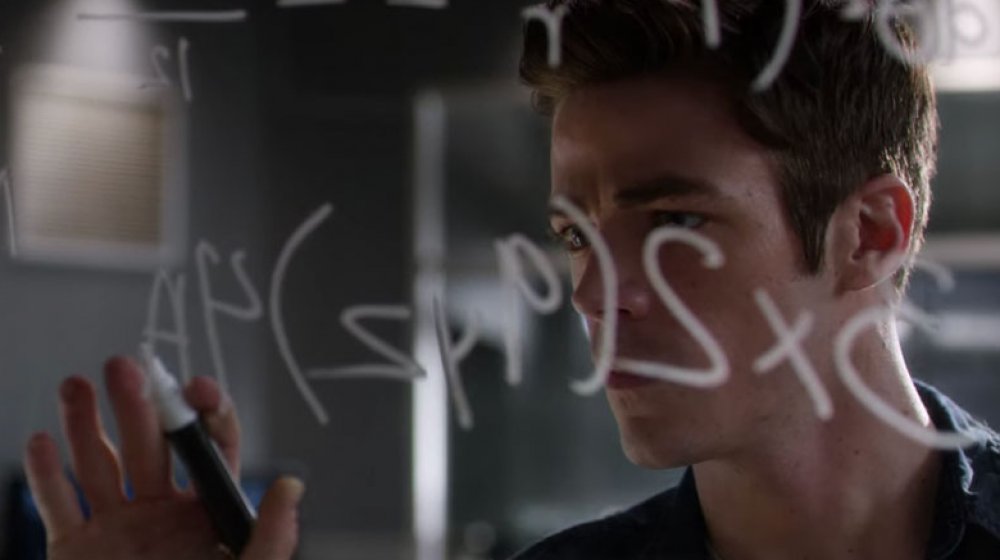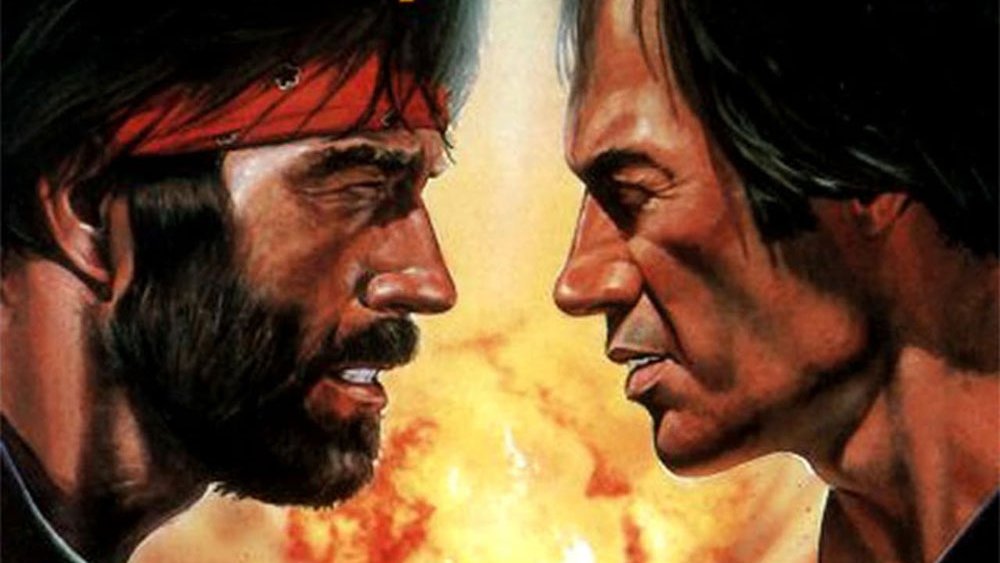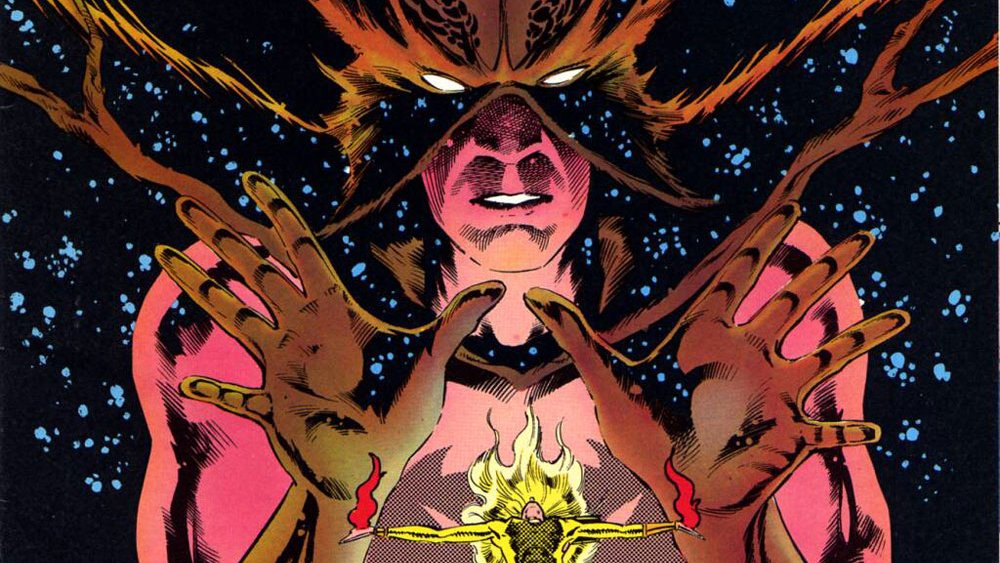Easter Eggs In The Flash Only Real Fans Noticed
Since the first time CW viewers saw Barry Allen break the sound barrier on his own two feet, The Flash has been going full tilt at being one of the most purely entertaining superhero shows to ever hit the airwaves. One of the best things about it? Unlike a few of its predecessors, like Smallville and Arrow — the show that spawned not only Flash but a sprawling TV multiverse that includes Supergirl and Legends of Tomorrow — it's never been shy about embracing the goofy, wild, over-the-top elements that make superheroes what they are. This is a show where we got to see Barry Allen fighting a telepathic super-gorilla, and where Tom Cavanaugh has played 15 different versions (and counting) of the same character because they keep bringing in new ones from parallel Earths.
Naturally, one of the biggest superhero traditions Flash has kept up is loading up its show with and Easter eggs for dedicated fans, and folks, Team Flash goes harder (and presumably faster) than anyone else when it comes to digging up obscure references. After all, if they're willing to build episodes around characters like Hazard and Big Sir, and do an entire season about Savitar, there's no limit to how arcane they're willing to get. From the very beginning to the Last Boy On Earth, here's a look at the Easter eggs in Flash that only the diehard DC fans noticed.
Showcase
Since debuting in 2014, The Flash has been running, so to speak, for well over a hundred episodes, and the producers' commitment to loading as many comics references as they can cram into 44 minutes started right at the beginning. And, fittingly enough, it was a reference to Barry Allen's earliest days, too.
Before he gets his powers, we see that Barry's very excited about this new particle accelerator that's definitely not going to be causing him life-threatening problems for the next few years, and we know that because he explains it to Iris when she asks him about a magazine he's been reading. The mag in question: Science Showcase, a pretty standard title that also happens to be a reference to Barry's first appearance. The Flash — this one, anyway — debuted in Showcase #4 in 1956, and had his earliest adventures there before moving into his own title.
He wasn't alone, either. Showcase was meant as, well, a showcase for new characters, and after the Flash was a hit, it also saw the debuts of the Silver Age versions of Green Lantern and the Atom, as well as lesser-known DC Comics mainstays like the Metal Men and the Challengers of the Unknown. Coincidentally, Rip Hunter first showed up there, too, and would eventually get his own Arrowverse TV show in the form of Legends of Tomorrow. Clearly we're only months away from the CW's dark, sexy take on the Inferior Five.
Tailor made
The Showcase nod isn't the only quick reference to the Flash's long comics history in the pilot, either. Shortly after realizing he has powers, Barry accidentally plows into a van collecting laundry for a business called Gambi Cleaners. In the comics, Paul Gambi is a lot more than a simple dry cleaner — he's a tailor who first appeared all the way back in 1963.
That might not sound like much, but it turns out that Gambi specializes in making costumes for Central City's supervillain population. He's the guy who makes sure that Captain Cold's fuzzy parka matches his goggles, and that nothing the Trickster wears matches anything else. He's even done some work on the superhero side of things, and is generally regarded as a neutral party in the Flash's fight against crime.
If you're a fan of the CW's superhero lineup, though, you're probably more familiar with his brother Peter. He dates back to 1977's Black Lightning #1, and as one of Jefferson Pierce's closest allies, he was a key character on the electric hero's TV show.
Hal who?
The pilot episode of The Flash also kicks off one of the show's longest-running references that has yet to pay off. Despite the fact that they've got a pretty robust roster of both big names and more obscure heroes — there's a whole lot of room between Superman and, say, Wild Dog — the Arrowverse shows have never been shy about referencing the other heroes of the DC Universe. There's one guy, however, who keeps being hinted at without ever managing to show up: Hal Jordan, Earth's resident member of the Green Lantern Corps.
It makes sense that Hal would get a few nods on the show, considering that he and Barry were pretty frequent team-up partners back in the day, but if you've been paying attention, you'll notice that it seems like his entire origin story has been playing out in the background of Barry's adventures. It starts in the pilot when Barry tests out his abilities at a test facility owned by Ferris Aircraft, the company where Hal was a test pilot during his origin story. But that's not all: later on in season 1 — episode 22, if you go looking for it — Barry mentions that the facility was shut down when a pilot went missing. By season 2, Barry even has a "Hal" on speed dial, along with a Bruce and a Diana.
Obviously, Green Lantern has yet to make an appearance in the Arrowverse, and while it could've happened offscreen sometime between the missing pilot and "Hal" showing up in Barry's contacts, you'd think he would've mentioned meeting a space cop with a magic ring. Still, with this many references and more, it definitely feels like they'd be building to something. Then again, six seasons is a pretty long time to tease a new character.
Gotham City Limits
Before Batwoman officially brought Gotham City to the Arrowverse, there was a running gag in the Arrowverse shows where the characters are pretty much constantly talking about Batman without ever saying his name. He's just this cranky, pointy-eared vigilante who teams up with Superman sometimes. It's especially prominent on Arrow, a show that's basically just Batman with a green costume, to the point of Ollie Queen fighting Ra's al-Ghul and the League of Assasins. It still happens on Flash, although it usually happens in a way that's pretty easy to miss if you're not looking for it.
The best examples happen in the second season. In "Flash of Two Worlds," a criminal claims he was locked up in Blackgate Penitentiary when the S.T.A.R. Labs particle accelerator exploded. Batman readers will know that Blackgate is, in fact, in Gotham City, usually used for holding all of the criminals who don't rely on the insanity defense getting them locked up in the far more famous, and suspiciously escapable, Arkham Asylum. This episode takes it a a step further, though, by having Joe West check the alibi by calling one of his cop buddies, Jimmy. It's a common name for sure, but everything in a script is there on purpose, and there's only one Jim we know that would be keeping track of Gotham City's criminal population.
Seventeen episodes later, we get another Gotham institution, but this time, it's one that's been imported to Central City. In "Back to Normal," Team Flash confronts a bad guy at the Ace Chemical Company. This is, historically, a pretty bad place to confront bad guys — the Gotham CIty branch is where a villain called the Red Hood got dunked in a vat of toxic waste and emerged as the Joker. As you might've heard, that dude is pretty dangerous. Hopefully Ace's offices in Central City are a little more strict about their OSHA regulations. Countless lives could've been saved in Gotham City if they'd only bothered to put in a simple railing.
Jonah, the Toyman, and the Zen Master of Speed
We've already mentioned Gambi's Cleaners in the pilot, but much like how every intersection in Central City seems to be on streets named for a pair of comics creators, nearly every business Barry comes across in his crimefighting career seems to have a connection to the larger DC Universe, if only in name.
The more notable ones include a gun shop named Hex's in the show's second episode. It is, of course, named for Western hero Jonah Hex, a heavily scarred bounty hunter whose skill with a firearm is legendary. This one's especially notable because we know for a fact that Jonah exists in The Flash's universe, since he later shows up in the time-traveling adventures of Legends of Tomorrow. Presumably, naming a gun shop after him would be this world's equivalent of using Billy the Kid or Jesse James. Maybe it's a family business, though; Hex is known to have descendants in the DCU, and even time traveled to the future himself when his Western book got canceled and he was rebooted into a post-apocalyptic Mad Max future for 18 issues. Really.
There are plenty of others, too. Season 2's second episode mentions Stagg Industries, the semi-villainous corporation owned by Simon Stagg in the pages of Metamorpho, and its ninth shows us Okamura Toys, named for the modern incarnation of Superman's foe the Toyman, Hiro Okamura. A really interesting one comes up in season 5, though: Mercury Labs. Obviously, there are a lot of reasons to use that name, including the fact that Mercury was the Roman god of speed, but in in this context, it really only connects to one person. Max Mercury was one of many comic book speedsters tied to the Flash. Actually, strike that, he was several speedsters. His attempts to commune with the Speed Force sent him bouncing around in time, and he'd adopt a new heroic identity in every era, including Whip Whirlwind, the Blue Streak, and Quicksilver (not that one). Eventually, he settled in the present as the "Zen Master of Speed," and served as the mentor of Barry's descendant, Bart Allen, also known as Impulse.
Movie sign!
If you're combing through the early episodes of The Flash, it often seems like the people behind the camera weren't sure whether the show would last, and wanted to make sure they crammed in as many references as they could just in case they only got a single season. Take, for example, the show's seventh episode, "Power Outage," which managed to namecheck four obscure characters at the same time.
It happens when a crook makes the very unfortunate mistake of trying to mug Barry Allen outside of a coffee shop. When the mugger pulls Barry — who is delighted by this whole scenario — into an alley, we see that it's covered in movie posters for a few in-universe films. The deepest cut is probably NIghthawk and Cinnamon, which is presumably a Western based on the comic book characters of the same name. It's worth noting that they were eventually retconned into being the Old West era's incarnations of Hawkman and Hawkgirl, and since those characters exist in the Arrowverse, it's safe to assume they were probably real people here, too.
There's also a poster for a biopic about Rita Farr, whose acting career tragically ended when she inhaled some strange volcanic gasses that allowed her grow to full-on kaiju size or shrink microscopically. She'd later become a founding member of the Doom Patrol as Elasti-Girl.
FInally, we have a poster for Blue Devil II: Hell To Pay, which might be the most thematically appropriate. Created by Dan Mishkin, Gary Cohn, and Paris Cullins in 1983, the Blue Devil was a DC hero who started out as Dan Cassidy, a movie stuntman and special effects genius working on a film called — wait for it — Blue Devil. For the role of the title character, he'd designed a high-tech suit full of gadgetry meant to simulate the Blue Devil's demonic powers for practical effects, but when an actual, literal demon from Hell showed up on the set, Dan was magically fused to the costume as an extension of his own body. As a side effect of all this bizarre magical energy, Dan also became a "weirdness magnet," constantly caught up in increasingly strange situations. Presumably, Dan's Arrowverse incarnation made it through the filming without that incident and launched a franchise. Either that, or it did happen and everyone was so excited about a stuntman having a fistfight with a real-life demon that he came back for a sequel.
That's not how equations work
Super-speed is not exactly a rare power in comic books. There are so many that we've all just gotten used to hearing the word "speedster," and that's without all the people who are faster than a speeding bullet or powered by the speed of mercury on top of all their other powers. Aside from the various Flashes and their sidekicks and descendants, DC's most notable speedster is probably Johnny Quick, a Golden Age also-ran (get it?) whose daughter, Jessie, was the basis for a character who showed up on The Flash.
Unlike Barry Allen, who got doused in electrified chemicals and came out of it with powers, Johnny Quick tapped into the speed force by focusing on a "speed formula," 3x2(9yz)4a. We're pretty sure that's nonsense, but then again, if you're good enough at math to get super-powers from it, you can probably make up whatever you want and call it an equation. Either way, it's a nifty piece of comics trivia, and in the opening of season 2's "Flash Back," we see it as part of Barry's complex notes on attempting to improve his speed.
That's actually played out in comics, too. In Flash #91, released in June 1994, Wally West gets desperate and uses the formula, adding its power to his own and achieving a level of speed where time pretty much just stops around him. Even when he's not trying to move fast, he's able to just casually walk around, stopping literally everything that was going wrong in Keystone City that day. Along the same lines, Flash #30 a few years earlier had a great story about Wally's super-speed perception kicking in automatically when a gunman opens fire in a movie theater, leading him to carefully pluck all of the other bullets out of the air before they hit anyone. That concept would form the basis for the show's use of "Flashtime," and particularly the season 4 episode "Enter Flashtime," where Barry and the gang have to deal with a similar situation.
Never bury a man in his truck
As you've already seen, there are a ton of comic book allusions being thrown around in The Flash, but there are just as many references to the wider world of pop culture, too. Cisco in particular is the kind of pop culture fiend who always has a movie quote locked and loaded. Most of these are pretty easy to catch — on the off chance that you need someone to explain what Star Wars and Game of Thrones are, we're more than happy to do so — but there's one VHS throwback that you might not know about.
In "The Man Who Saved Central City," the premiere episode of the show's second season, Cisco drops a quip about how Barry has "decided to go all Lone Wolf McQuade and fight crime by himself." Even if you don't know what he's talking about, you get the idea: this McQuade fellow prefers to work alone. If, however, you spent a lot of time in video stores in the '80s (kids, a video store was like a Netflix you had to drive to every weekend), you know that Cisco has exquisite taste in terrible action movies. Released in 1983, this film starred martial arts icon, Finnish hamburger spokesman and human meme Chuck Norris as the title character, a Texas Ranger tasked with bringing down Rawley Wilkes, a crime lord played by Kung Fu star David Carradine.
The whole movie is hilariously ridiculous, but it hits its high point (or low point, depending on how you look at it) when Wilkes captures McQuade, beats him into unconsciousness, and then buries him alive. For reasons that are never explained, Wilkes decides to bury McQuade in his pickup truck, leading to a scene when McQuade regains consciousness, wakes himself up by pouring an open beer (which, again, he has to drink while driving), and then kicking his truck into high gear to drive himself out of his own grave. It's one of the dumbest things that's ever been committed to film, and also one of the raddest. The only downside is that if this is what you're expecting from hearing that Barry "went all Lone Wolf McQuade," Flash's second season is going to be a little disappointing.
Back issues
Finally, we have what might be Flash's weirdest reference of all. In fact, it's not even a comic book reference. It's an actual comic. In season 4's "When Harry Met Harry," we get a brief shot of Ralph Dibny kicking back and enjoying a copy of 1989's Young All-Stars #20, an actual, real-life DC Comic that you can find in a dollar bin near you.
But here's the thing: that issue doesn't have anything to do with The Flash. It's not a story with Black Bison, the villain of this episode. It's not an Elongated Man story. In fact, aside from a single-panel cameo of Johnny Quick, there's no overlap in characters with the entire series. There's a brief sequence featuring Native American characters, but it's not tied into Black Bison, it's about Arak, Son of Thunder, who might be an even more obscure character. The artifacts at the center of the plot are even specifically identified as being Sioux, not from the fictional Quontauka nation in the issue. It's mostly about Fury, Wonder Woman's daughter from an alternate Earth.
With that in mind, it's pretty safe to assume that somebody working on the show was just catching up on Roy Thomas' late '80s work and had this issue handy when the scene was being filmed. It does, however, raise a whole lot of weird questions. Like, for instance, apparently DC Comics, the company, exists in the Arrowverse? Since the Flash, Vibe, Killer Frost, Green Arrow, Firestorm, RIp Hunter, Black Canary, White Canary, Hawkman, Hawkgirl, the Justice Society, Mr. Terrific, Wild Dog, Blue Devil, Jonah Hex, the Silver Age Atom, the Modern Age Atom, two versions of Vixen, and Zari Tomaz (whose superhero name we don't use anymore) are actual real people in this universe, then what exactly do they publish? Barry doesn't know who Superman is when they meet in "Elseworlds," so it can't be him! If Batman's real in this world, then why would the company name itself after Detective Comics? Have they just been putting out Young friggin' All-Stars for the past 80 years? Or was this just something left behind on a trans-dimensional visit from Tom Cavanagh, the Harrison Wells of our timeline?
